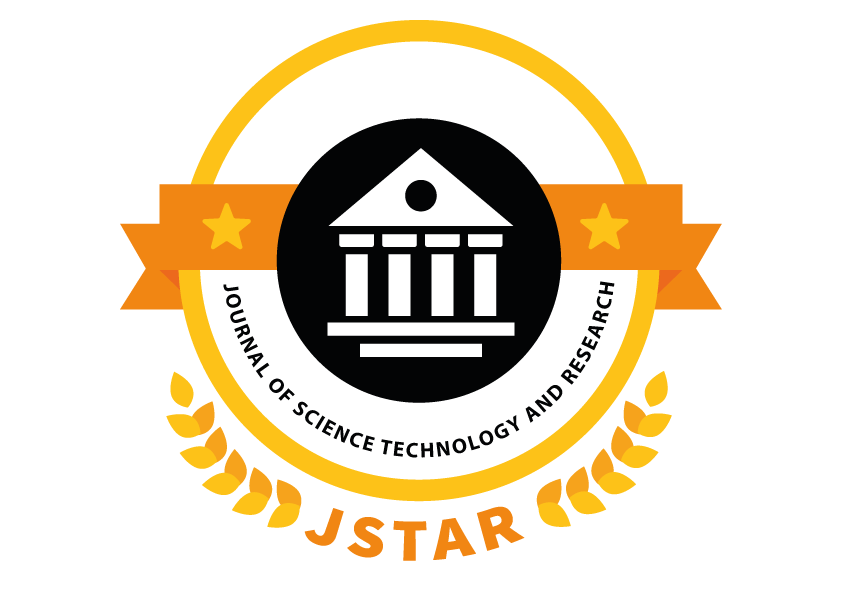1. Z. Allam and D. S. Jones, “On the Coronavirus (COVID-19) Outbreak and the Smart City Network: Universal Data Sharing Standards Coupled with Artificial Intelligence (AI) to Benefit Urban Health Monitoring and Management,” Healthcare, vol. 8, no. 1, p. 46, 2020.
2. M. Jiang, X. Fan, and H. Yan, “Retina Mask: A Face Mask detector,” 2020. *Online+. Available: http://arxiv.org/abs/2005.03950.
3. M. Gupta, M. Abdel Salam, and S. Mittal, “Enabling and Enforcing Social Distancing Measures using Smart City and ITS Infrastructures. A COVID-19 Use Case,” 2020. *Online+. Available: https://arxiv.org/abs/2004.09246.
4. J.Won Sonn and J. K. Lee, “The smart city as time-space cartographer in COVID-19 control: the South Korean strategy and democratic control of surveillance technology,” Eurasian Geogra , Econ., pp. 1–11, May. 2020.
5. J. W. Sonn, M. Kang and Y. Choi, “Smart city technologies for pandemic control without lockdown”, Int. J. Urban Sci., vol. 24, no. 2, pp. 149-151, 2020.
6. R. Jaiswal, A. Agarwal and R. NEGI, “Smart Solution for Reducing the COVID-19 Risk using Smart City Technology”, IET Smart Cities, vol. 2, pp. 82-88, 2020.
7. X. Wang, X. Le and Q. Lu, “Analysis of China’s Smart City Upgrade and Smart Logistics Development under the COVID-19 Epidemic”, J. Phys. Conf. Ser., vol. 1570, pp. 012066, 2020..
8. Karthick, R., et al. “Overcome the challenges in bio-medical instruments using IOT–A review.” Materials Today: Proceedings (2020). https://doi.org/10.1016/j.matpr.2020.08.420
9. Karthick, R., et al. “A Geographical Review: Novel Coronavirus (COVID-19) Pandemic.” A Geographical Review: Novel Coronavirus (COVID-19) Pandemic (October 16, 2020). Asian Journal of Applied Science and Technology (AJAST)(Quarterly International Journal) Volume 4 (2020): 44-50.
10. Sathiyanathan, N. “Medical Image Compression Using View Compensated Wavelet Transform.” Journal of Global Research in Computer Science 9.9 (2018): 01-04.
11. Karthick, R., and M. Sundararajan. “SPIDER-based out-of-order execution scheme for Ht-MPSOC.” International Journal of Advanced Intelligence paradigms 19.1 (2021): 28-41. https://doi.org/10.1504/IJAIP.2021.114581
12. Sabarish, P., et al. “An Energy Efficient Microwave Based Wireless Solar Power Transmission System.” IOP Conference Series: Materials Science and Engineering. Vol. 937. No. 1. IOP Publishing, 2020. doi:10.1088/1757-899X/937/1/012013
13. Vijayalakshmi, S., et al. “Implementation of a new Bi-Directional Switch multilevel Inverter for the reduction of harmonics.” IOP Conference Series: Materials Science and Engineering. Vol. 937. No. 1. IOP Publishing, 2020. doi:10.1088/1757-899X/937/1/012026
14. Karthick, R., and M. Sundararajan. “Hardware Evaluation of Second Round SHA-3 Candidates Using FPGA (April 2, 2014).” International Journal of Advanced Research in Computer Science & Technology (IJARCST 2014) 2.2.
15. Karthick, R., et al. “High resolution image scaling using fuzzy based FPGA implementation.” Asian Journal of Applied Science and Technology (AJAST) 3.1 (2019): 215-221.
16. P. Sabarish, R. Karthick, A. Sindhu, N. Sathiyanathan, Investigation on performance of solar photovoltaic fed hybrid semi impedance source converters, Materials Today: Proceedings, 2020, https://doi.org/10.1016/j.matpr.2020.08.390
17. Karthick, R., A. Manoj Prabaharan, and P. Selvaprasanth. “Internet of things based high security border surveillance strategy.” Asian Journal of Applied Science and Technology (AJAST) Volume 3 (2019): 94-100.
18. Karthick, R., and M. Sundararajan. “A novel 3-D-IC test architecture-a review.” International Journal of Engineering and Technology (UAE) 7.1.1 (2018): 582-586.
19. Karthick, R., and M. Sundararajan. “Design and implementation of low power testing using advanced razor based processor.” International Journal of Applied Engineering Research 12.17 (2017): 6384-6390.
20. Karthick, R., and M. Sundararajan. “A Reconfigurable Method for TimeCorrelatedMimo Channels with a Decision Feedback Receiver.” International Journal of Applied Engineering Research 12.15 (2017): 5234-5241.
21. Karthick, R., and M. Sundararajan. “PSO based out-of-order (ooo) execution scheme for HT-MPSOC.” Journal of Advanced Research in Dynamical and Control Systems 9 (2017): 1969.
22. Karthick, R. “Deep Learning For Age Group Classification System.” International Journal Of Advances In Signal And Image Sciences 4.2 (2018): 16-22.
23. Karthick, R., and P. Meenalochini. “Implementation of data cache block (DCB) in shared processor using field-programmable gate array (FPGA).” Journal of the National Science Foundation of Sri Lanka 48.4 (2020). http://doi.org/10.4038/jnsfsr.v48i4.10340
24. Suresh, Helina Rajini, et al. “Suppression of four wave mixing effect in DWDM system.” Materials Today: Proceedings (2021). https://doi.org/10.1016/j.matpr.2020.11.545
25. M. Sheik Dawood, S. Sakena Benazer, N. Nanthini, R. Devika, R. Karthick, Design of rectenna for wireless sensor networks, Materials Today: Proceedings, 2021. https://doi.org/10.1016/j.matpr.2020.11.905
26. M. Sheik Dawood, S. Sakena Benazer, R. Karthick, R. Senthil Ganesh, S. Sugirtha Mary, Performance analysis of efficient video transmission using EvalSVC, EvalVid-NT, EvalVid, Materials Today: Proceedings,2021. https://doi.org/10.1016/j.matpr.2021.02.287.
Page No: 91-100
Abstract : The corona virus COVID-19 pandemic is causing a global health crisis so the effective protection methods is wearing a face mask in public areas according to the World Health Organization (WHO). The COVID-19 pandemic forced governments across the world to impose lockdowns to prevent virus transmissions. Reports indicate that wearing facemasks while at work clearly reduces the risk of transmission. An efficient and economic approach of using AI to create a safe environment in a manufacturing setup. A hybrid model using deep and classical machine learning for face mask detection will be presented. A face mask detection dataset consists of with mask and without mask images, we are going to use OpenCV to do real-time face detection from a live stream via our webcam. We will use the dataset to build a COVID-19 face mask detector with computer vision using Python, OpenCV, and Tensor Flow and Keras. Our goal is to identify whether the person on image/video stream is wearing a face mask or not with the help of computer vision and deep learning.
Keyword Machine learning, R-CNN algorithm, MobilenetV2, Keras OpenCV. Face Mask Detection.
Reference:
